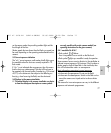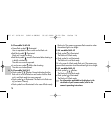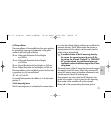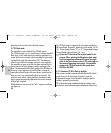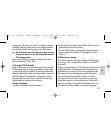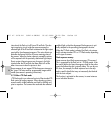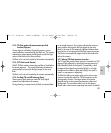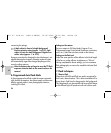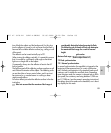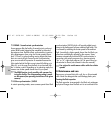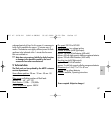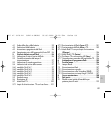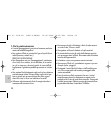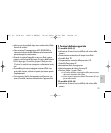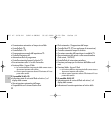
tion of both the subject and the background. For this situa-
tion the reflector is turned in such a manner that the flash is
bounced off a suitable reflective surface (e.g. ceiling or wall
of the room).
The reflector can be turned vertically up to 90°.
When turning the reflector vertically, it is essential to ensure
that it is moved by a sufficiently wide angle so that direct
light can no longer fall on the subject.
Consequently, always turn the reflector at least to the 60°
lock-in position.
The light bounced off the reflecting surfaces produces a soft
and uniform illumination of the subject. The reflecting surfa-
ce must be white or have a neutral colour, and it must not
be structured, e.g. wooden beams in a ceiling as these
might cause shadows.
For colour effects just select the reflective surface in the des-
ired colour.
Take into account that the maximum flash range is
considerably diminished when bouncing the flash.
The following rule of thumb will help you determine
the maximum flash range for a room of normal
height:
guide number
Maximum flash range = –––––––––––––––––––––––––
(flash-to-subject distance x 2)
7.2 Flash synchronisation
7.2.1 Normal synchronisation
In normal synchronisation the mecablitz is triggered at the
beginning of the exposure time (1st curtain synchronisa-
tion). Normal synchronisation is the standard mode on all
cameras, and is suitable for most flash shots. Depending
upon the given mode, the camera is changed over to flash
sync speed, the customary one being between 1/30th sec.
and 1/125th sec. (see the camera’s operating instructions).
No settings have to be made on the mecablitz, nor is there
any display for this mode.
☞
85
ķ
707 47 0178.A2 36AF-4-CNOPS 05.06.2008 8:29 Uhr Seite 85



